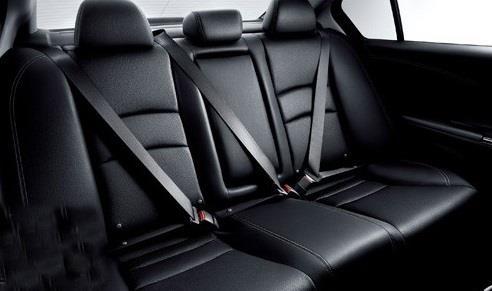In recent years, the automobile industry has developed vigorously. In addition to being a means of transportation, automobiles also take into account the role of personality display and status symbol. Especially for car seat fabrics, its quality, luster, texture and color have become one of the main factors for consumers to show their individuality when buying cars.
However, from the perspective of automotive technology, seat fabrics also have more important functions. Today, when the number of cars is increasing year by year, the road traffic accident rate is also increasing year by year, and the car seat system plays a decisive protective role as a safety component to reduce losses. In addition to the backrest, headrest, seat cushion, and fixed parts connected to the car body, the car seat system, seat fabric is also an indispensable factor to ensure driving safety.
When braking or turning sharply during driving, the human body will continue to slide due to the effect of inertia. However, there is a certain frictional resistance between human skin and clothing fabrics, and between clothing fabrics and seat fabrics, so they can maintain relative stable. When an impact occurs, the human body is greatly affected by inertia. Although the seat belt provides a strong restraining force, it still needs to maintain a certain frictional resistance between the seat fabric and the occupant, thereby reducing the degree of sliding of the human body and avoiding the sliding of the hips. As a result, the braking action cannot be completed. It can be seen that the automobile industry has very high requirements for the coefficient of friction of seat fabrics. Testing and studying the coefficient of friction between hundreds of fabrics and various clothing fabrics is a necessary prerequisite for selecting seat materials.

Test method of friction coefficient between automobile seat fabric and cloth
1. test equipment
The LTMXS-06 friction coefficient meter independently developed by Link Testing is specialized in measuring plastic films and sheets, rubber, paper, cardboard, woven bags, fabric styles, metal material composite belts for communication cables and optical cables, conveyor belts, wood, coatings , Brake pads, wipers, shoe materials, tires and other materials when sliding static friction coefficient and dynamic friction coefficient. The instrument meets many national and international standards, such as ISO8295, GB10006, ASTMD1894, TAPPIT816.
2. Test principle and method
Using the direct contact method to test, as shown in the following figure: The test surface of a sample is fixed on the horizontal test board flatly, and the sample is parallel to the length of the test bench. Place the test surface of the other sample downward, and fix the sample with double-sided tape on the bottom surface of the slider and the non-test surface of the sample. Place the sliding block with the sample in the center of the first sample without impact, so that the test direction of the two samples is parallel to the sliding direction and the force-bearing system is just not stressed. Keep the two samples in contact for 15s. Start the instrument to move the two samples relative to each other, and automatically calculate the dynamic and static friction coefficients.
3. Related test cases and literature research
In the article "Synthetic leather and the friction coefficient between leather and cloth", Wang Haoqing, College of Engineering, Zhejiang Agriculture and Forestry University and others used Link Testing LTMXS-06 friction coefficient meter to test PU leather, pigskin, crazy horse skin, sheepskin and four kinds of The dynamic and static friction coefficients of fabrics (cotton canvas, cotton denim, polyester, linen) have been tested and analyzed, and it is believed that the type of leather has an extremely significant influence on the friction coefficient. Taking the contact material "cotton denim" as an example, the dynamic friction coefficient of PU leather is 0.388, the dynamic friction coefficient of pigskin is 0.765, the dynamic friction coefficient of crazy horse leather is 0.427, and the dynamic friction coefficient of sheepskin is 0.214 (this data comes from the literature " Research on the friction coefficient between synthetic leather and leather and cloth ").
Link Testing always focus on the packaging testing instruments please visit our website: www.linktesting.org